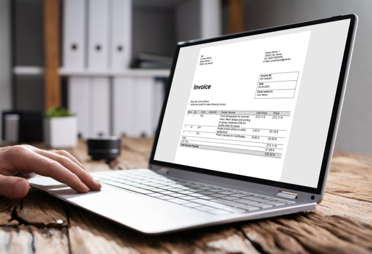A checklist for preparing a payment times report
If your business is in Australia, chances are you’re familiar with payment times reporting laws, also known as The Australia Payment Times Reporting Scheme. With small businesses accounting for 97.5 percent of Australia’s business economy, timely payments are important for maintaining positive cash flow.
If you are new to the reporting rules, that’s ok, too. This blog will give you an overview of a payment times report and provide a handy checklist for preparing and submitting yours (as long as your business qualifies).
What is Payment Times Reporting (PTR)?
In January 2021, the Federal government of Australia launched the Payment Times Reporting Act of 2020 to encourage better payment practices of large businesses to small business suppliers. Why? To ease the burden and stress on the lifeblood of its economy – small businesses.
Under the regulation, large businesses with an annual revenue of over $100 million must submit a report every six months on how they pay small business suppliers. The information is aggregated and published in the publicly available The Payment Times Register — giving small businesses (and everyone) insight into their big business customers.
Checklist: key items you’ll need to prepare a payment times report.
It can seem overwhelming at first, but take time to learn all the basics of payment times reporting laws: who manages the report, who qualifies for reporting, when to file, where to submit a report and other essential information. With the background information on who, when, where and why, you’ll be ready to compile the what — the details needed for your payment times report.
Use the checklist below — which covers the essential information required — to start preparing for your payment times report:
 Entity information
Entity information
An overview of your business, including your entity name, Australian Business Number (ABN), your controlling corporation (if applicable), and a description of your primary industry.


 Reporting period dates
Reporting period dates
Your reporting period dates, including the starting date of the period covered in the report and the end date. You generally submit a report every six months.
 Standard payment periods
Standard payment periods
Your standard payment periods — or standard terms offered in contracts to small business suppliers. If standard payment terms are not offered, the standard payment period reported is the most common (or mode in statistical terms) payment times offered. Generally, standard payment periods are based on calendar days, including weekends and public holidays.


 Small business payments
Small business payments
Include small business payment times as a percentage of your total number and value of small business payments using the equations for the following categories:
- Within 20 days of invoice issue
- Between 21-30 days after the issue date
- Between 31-60 days after the issue date
- Between 61-90 days after the issue date
- Between 91-120 days after the issue date
- Over 120 days after the issue date
Payment by number
Total number of small business invoices made under a trade credit arrangement paid between [x] and [y] days
Total number of all small business invoices paid excluding credits, rebates, discounts and other excluded payments
Payment by value
Total value of small business invoices made under a trade credit arrangement paid between [x] and [y] days
Total value of all small business invoices paid excluding credits, rebates, discounts and other excluded payments
 Invoicing arrangements
Invoicing arrangements
Details of any invoice practices, including invoice date submissions, payment progress requirements, e-invoicing policies, payment systems, procurement subscriptions or approval requirements.


 Small business procurement
Small business procurement
The total value of small business invoice payments as a proportion of all procurement, using the equation:
Total value of small business invoice payments made under trade credit arrangements
Total value of all invoice payments excluding credits, rebates, discounts and other excluded payments

 Supply chain financing
Supply chain financing
Any supply chain financing arrangements and supporting requirements — or early payment discounts — used with small business suppliers. You must include the proportion of small business invoices where these arrangements are used.
 Notifiable events
Notifiable events
Include if any of the following three types of notifiable events have occurred:
- a change in the accounting period
- a change of business name, or
- the member entity has notified that it is no longer a reporting entity because its income for the past two consecutive years is less than $10 million.


 Report comments
Report comments
Provide additional information that gives context or explanation for the information you submit in the report, including but not limited to:
- Methodology for preparing report
- Change in voluntary submission to mandatory reporting
- Reporting of small businesses included in the SBI tool that you feel do not qualify
- Disputed invoices
 Submission and approval details
Submission and approval details
Name, position and details of the person submitting the report, or the “approver” – who must be a member of your principal governing body.


 Principal governing body
Principal governing body
The name and description of your governing body, or board, including the member names of your board.
Find compliance and relief with AP automation.
Once you’ve reviewed the checklist of essential content needed for compiling a payment times report, you’re ready to start pulling it all together. You’ll likely have to use data from several sources, but gathering that information will be even easier with a reliable accounts payable automation solution.
Using accounts payable automation software like Medius, you can easily comply with laws while streamlining and optimizing your payment process. With benefits like ensuring prompt payment processing, tracking deadlines, guaranteeing accurate data, providing real-time reporting, establishing an audit trail, and centralizing payment information, you’ll be in good shape to comply with payment time reporting laws, avoid penalties, and streamline payment processes.






